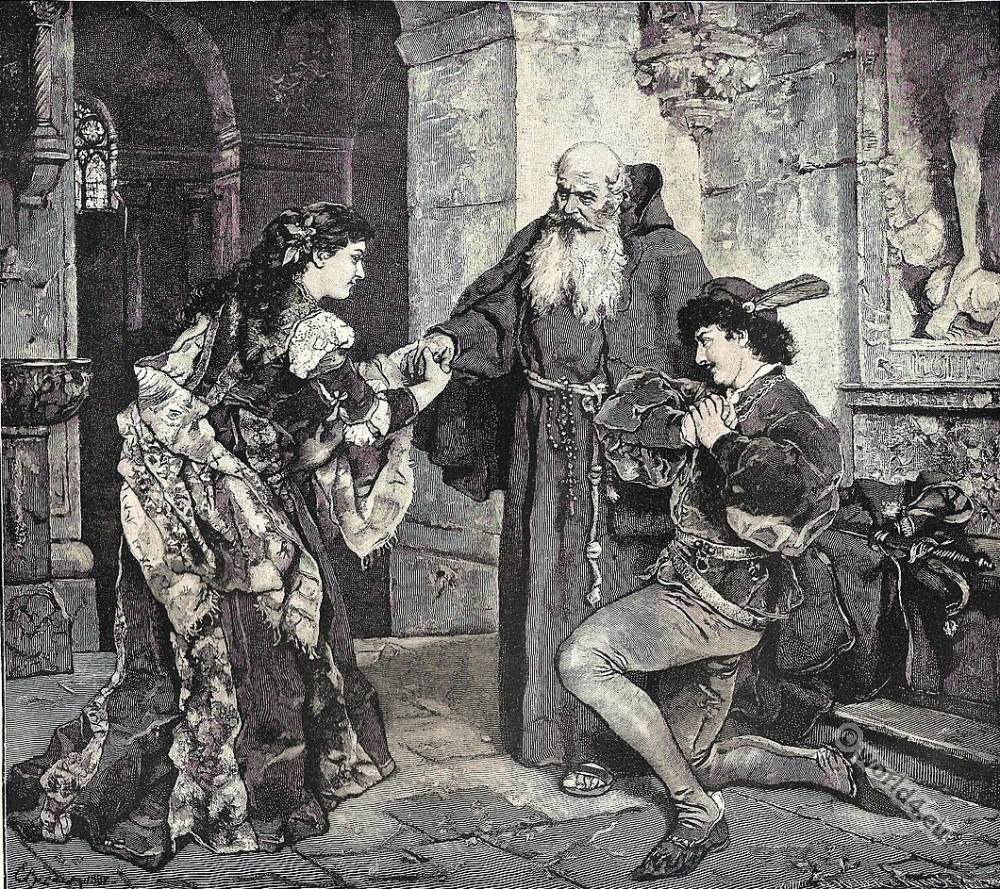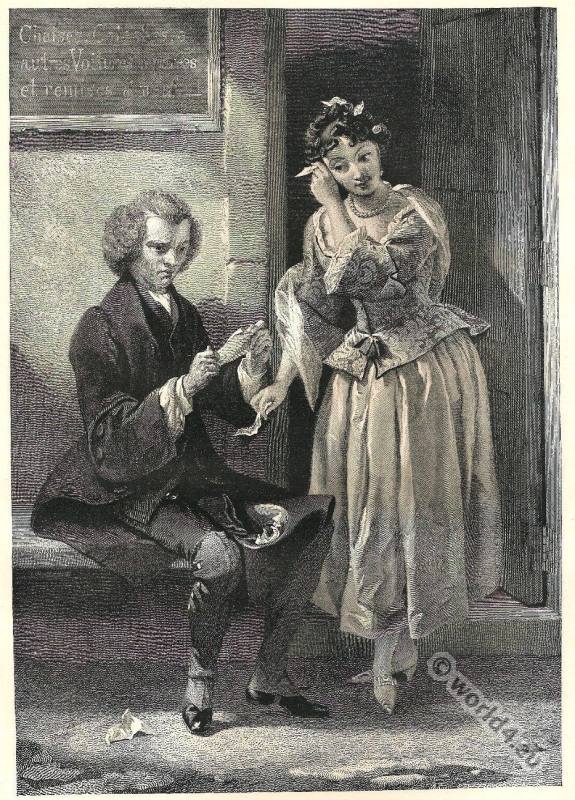Karl Becker, Artist. Kohn, Engraver.
Romeo and Juliet in Friar Laurence’s Cell,
by William Shakespeare
Friar Laurence
“SO smile the heavens upon this holy act
That after-hours with sorrow chide us not.
Here comes the lady; O, so light a foot
Will ne’er wear out the everlasting flint.”
Juliet
“Good even to my ghostly confessor!”
Friar Laurence
“Romeo shall thank thee, daughter, for us both.”
Juliet
“As much to him, else are his thanks so much.”
Romeo
“Ah, Juliet, if the measure of thy joy
Be heaped like mine, and that thy skill be more
To blazon it, then sweeten with thy breath
This neighbor air, an let rich music’s tongue
Unfold the imagined happiness that both
Receive in either by this dear encounter.”
Juliet
“My true love is grown to such excess
I cannot sum up half my sum of wealth.”
Shakespeare’s “Romeo and Juliet.”
Romeo and Juliet is a 1597 published tragedy by William Shakespeare (1564-1616). It depicts the story of two young lovers who belong to feuding families. The ending with the suicide of Romeo and Juliet drama is one of the most famous works of Shakespeare and the most famous love story in the world literature.
Source: Character sketches of romance, fiction and the drama by Rev. Ebenezer Cobham Brewer, 1892. A revised American edition of the readers handbook. Edited by Marion Harland.
Discover more from World4 Costume Culture History
Subscribe to get the latest posts sent to your email.


